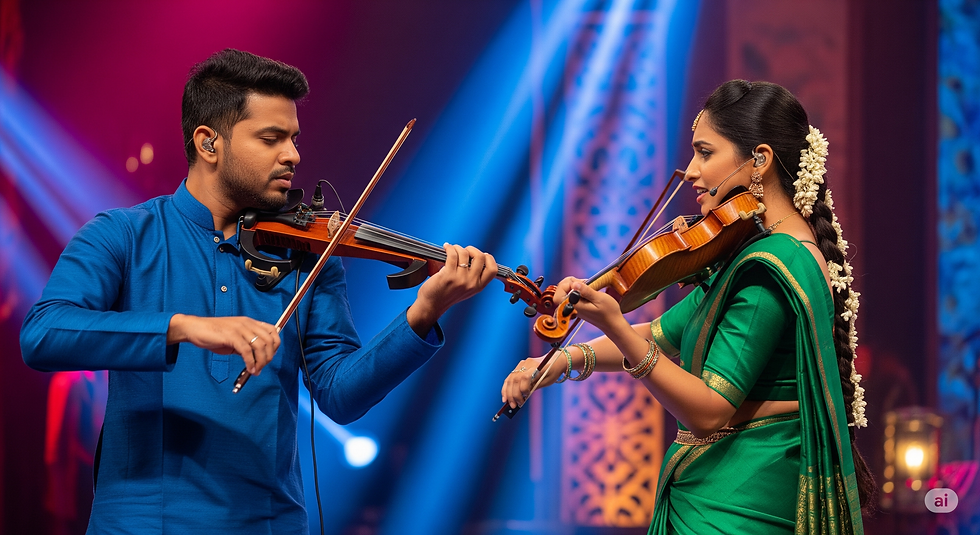"Discovering the Art of Carnatic Violin: A Journey Through Its Origin, Parts, and Tuning"
- Sharanya naidu
- May 13, 2023
- 2 min read
Updated: Oct 16, 2024
Welcome, music learners! Today, we are going to dive into the captivating world of Carnatic violin lessons. My name is Sumook, and I am a Carnatic violinist from Bangalore, South India. I have been learning this beautiful instrument since the tender age of six, which means I have dedicated 19 years of my life to mastering the violin under the guidance of the esteemed vidhvan Hv Krishnamurthy of Vijaya College of Music, Bangalore. Aside from my classical training, I also have the privilege of playing with fusion bands in Bangalore, such as the Raghu Dixit Project, Eshwara Project, and my own band called Swaralaya Amrutha.
Let's begin by exploring the violin itself. As you may already know, the violin has a rich history and origin. It hails from Cremona, a city in Italy, and was introduced into our Indian classical system of music by none other than Shree Muthuswami Dikshitar's son, a prominent figure among the Trinity of Indian classical music.
Now, let's take a closer look at the different parts of the violin. The black components you see here are the pegs, which serve as the tuning pegs to which the strings are attached. These pegs allow us to adjust the tension of the strings according to the desired shruti, a fundamental concept in Carnatic music that I will explain shortly. The scroll, located at the top, holds the entire body of the violin together. The tailpiece, on the other hand, anchors the lower part of the strings, while the tuning pegs and fine tuners enable us to make precise adjustments to the shruti. One fascinating feature of the violin is the bridge, a piece of wood wedged into the instrument without any glue. The bridge holds the strings in place and provides tension, allowing them to vibrate and produce sound. Additionally, we have the F holes, which act as channels for the sound to escape, and the entire body of the violin acts as a resonating chamber. And of course, we can't forget about the bow, which serves as the counterpart to a guitar pick. The bow is crafted from a special type of wood and consists of the frog, the bow hairs, and the bow wood itself.
Now, let's move on to an essential aspect of violin playing: tuning. The conventional Carnatic violin, like the one I have here, features four strings. These strings are tuned to specific notes, each with its own significance in Indian classical music. The lower string is tuned to mandra shadja (lower sa), followed by mandra panchama (pa), madhya sthayi shadja (sa), and finally, panchama (pa) on the skinnier string. The distinct feature of Indian classical tuning is the emphasis on specific intervals and notes within the octave. To reiterate, the strings are tuned as mandra shadja, mandra panchama, madhya shadja, and madhya panchama, forming two octaves.
With the help of various fingering techniques, you will be able to navigate through one, two, and even three octaves on the violin, exploring the vast range of sounds and melodies available to you.
For personalized 1:1 violin lessons with top instructors,
message us on WhatsApp - +91-8072415626



Comments